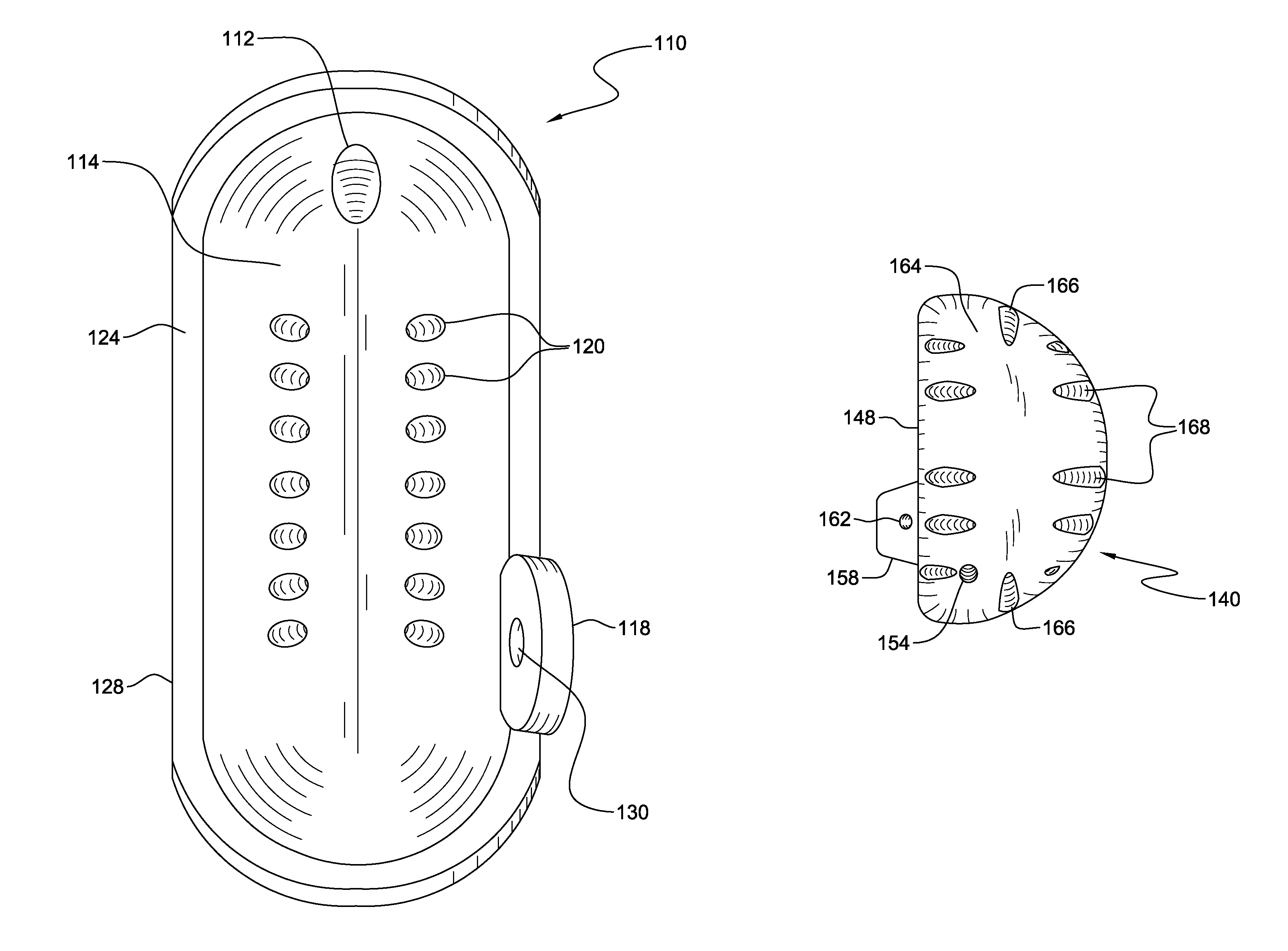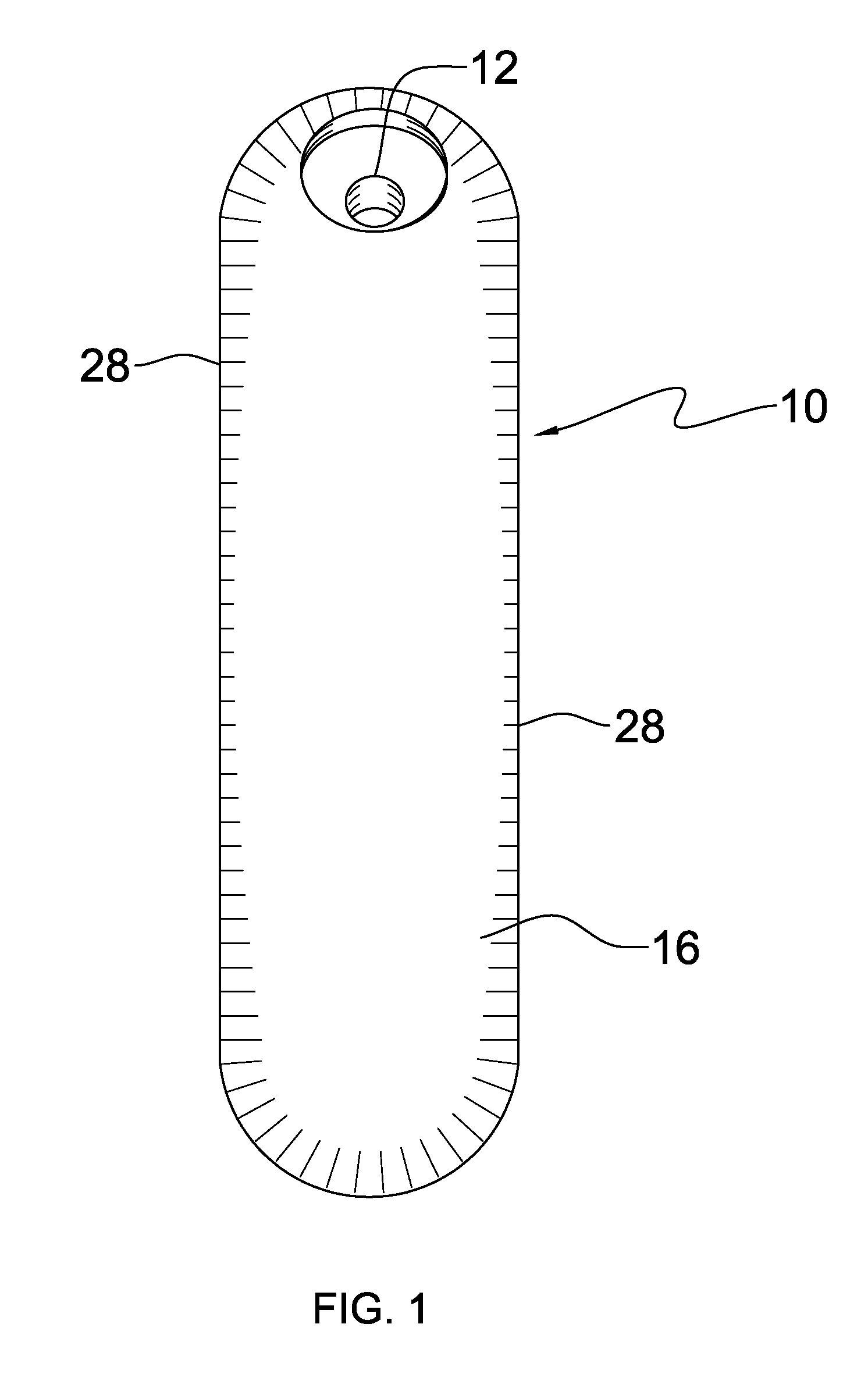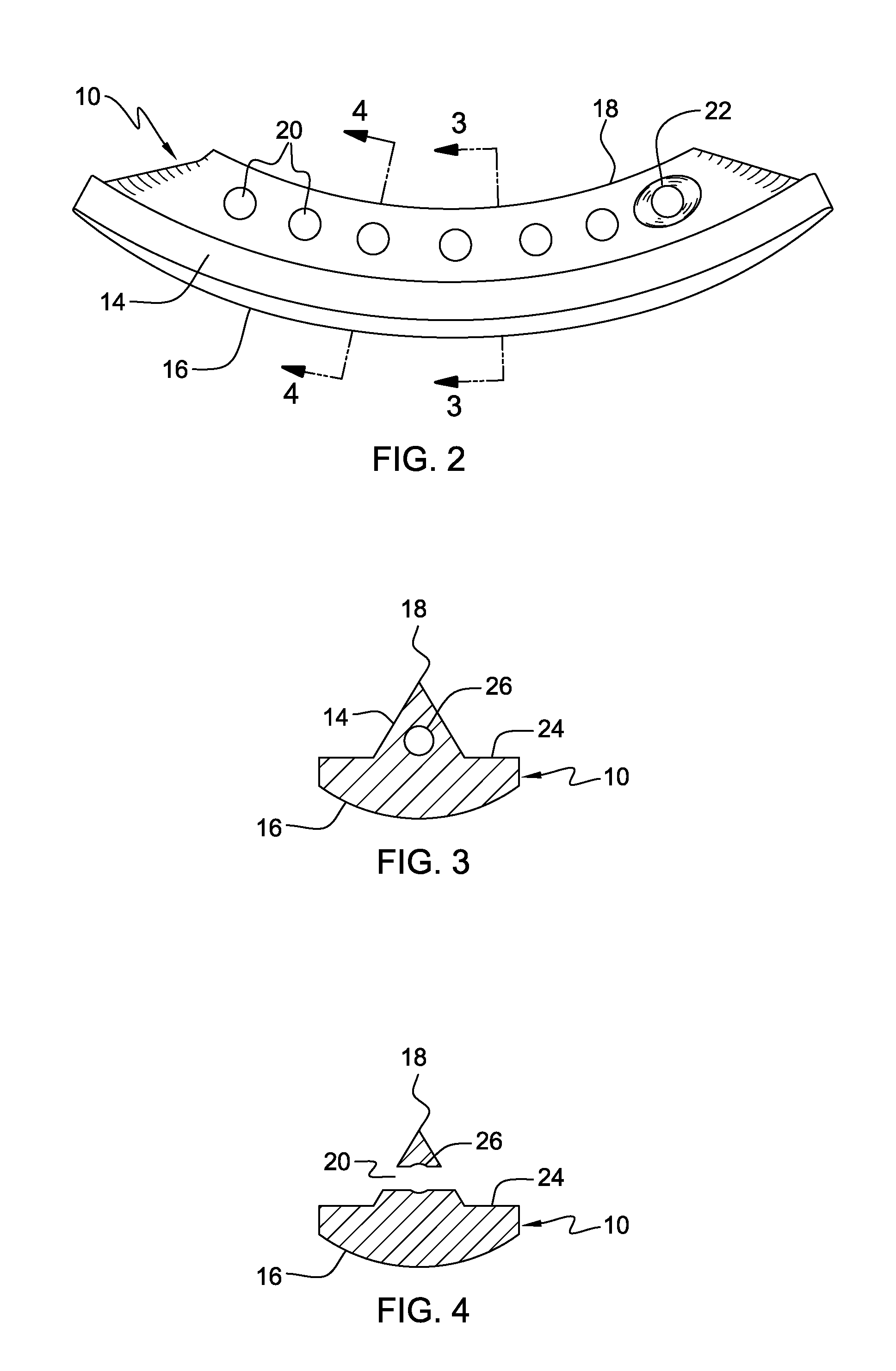Knee joint prosthesis
a technology for knee joints and prostheses, applied in knee joints, prostheses, medical science, etc., can solve the problems of large surgical trauma to patients, failure of implanted prostheses, and reduced bone availability, so as to reduce surgical trauma, reduce the required size of surgical incisions, and reduce bone. the effect of volum
- Summary
- Abstract
- Description
- Claims
- Application Information
AI Technical Summary
Benefits of technology
Problems solved by technology
Method used
Image
Examples
Embodiment Construction
[0025]The present invention relates to prosthetic implants and, more particularly, to prostheses for human knee joints that are implantable by means of arthroscopic as well as open surgical techniques.
[0026]The femoral component 10 of the prosthesis of the present invention is illustrated in FIG. 1-5.
[0027]A distal view of the femoral component 10 is shown in FIG. 1. The femoral component 10 may have one or more through holes 12 passing through the distal surface of 16 of the femoral component 10 for receiving a bone screw or other fastener known in the art for attaching the femoral implant 10 to the distal end of a femur. The periphery 28 of the femoral component is continuous, smooth and unbroken by any openings.
[0028]As shown in FIG. 2, the femoral component 10 comprises a curved body portion 14 having a convexly curved distal surface 16 and a concave proximal surface 18. A plurality of generally transverse bores or holes 20 are formed through the body portion 14 substantially pe...
PUM
 Login to View More
Login to View More Abstract
Description
Claims
Application Information
 Login to View More
Login to View More - R&D
- Intellectual Property
- Life Sciences
- Materials
- Tech Scout
- Unparalleled Data Quality
- Higher Quality Content
- 60% Fewer Hallucinations
Browse by: Latest US Patents, China's latest patents, Technical Efficacy Thesaurus, Application Domain, Technology Topic, Popular Technical Reports.
© 2025 PatSnap. All rights reserved.Legal|Privacy policy|Modern Slavery Act Transparency Statement|Sitemap|About US| Contact US: help@patsnap.com



